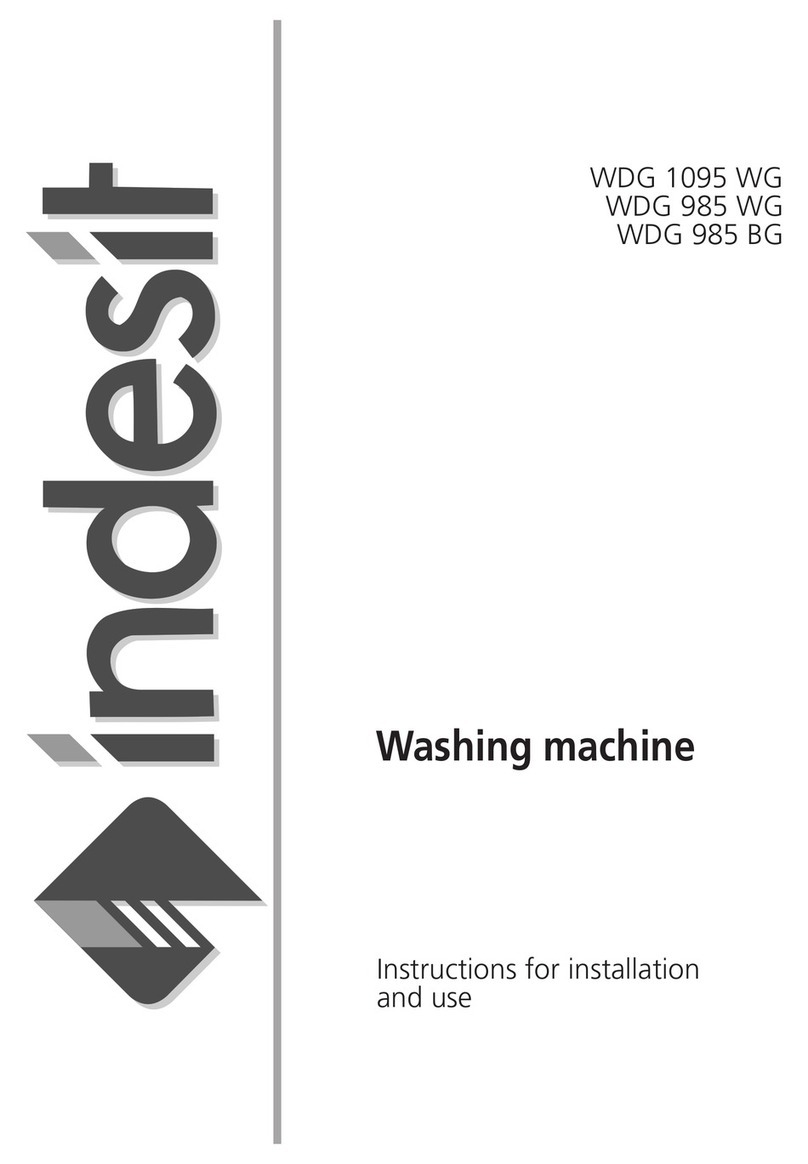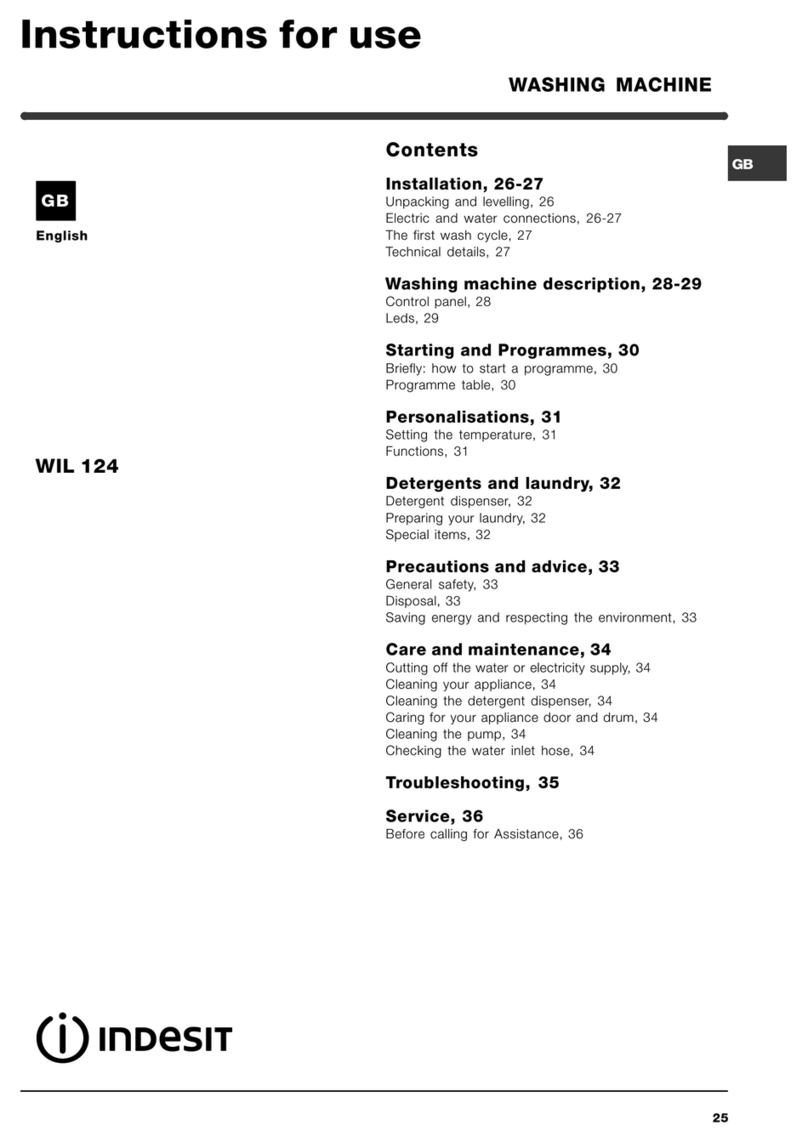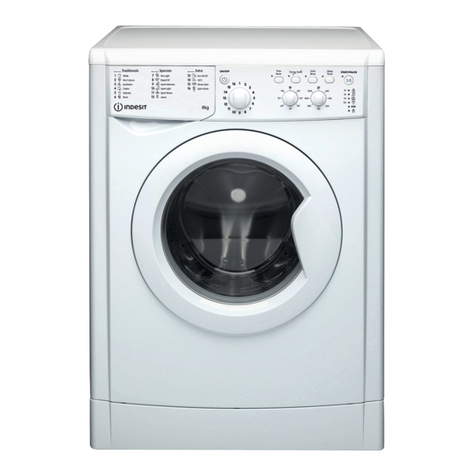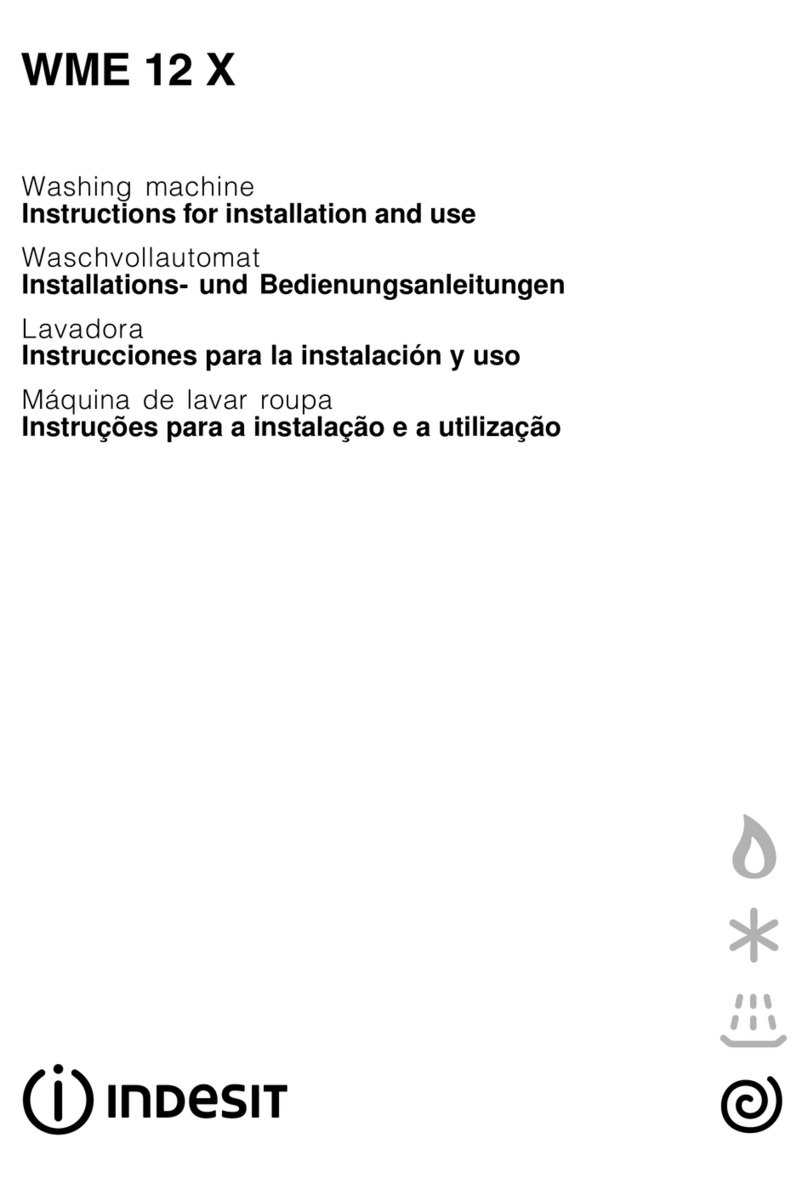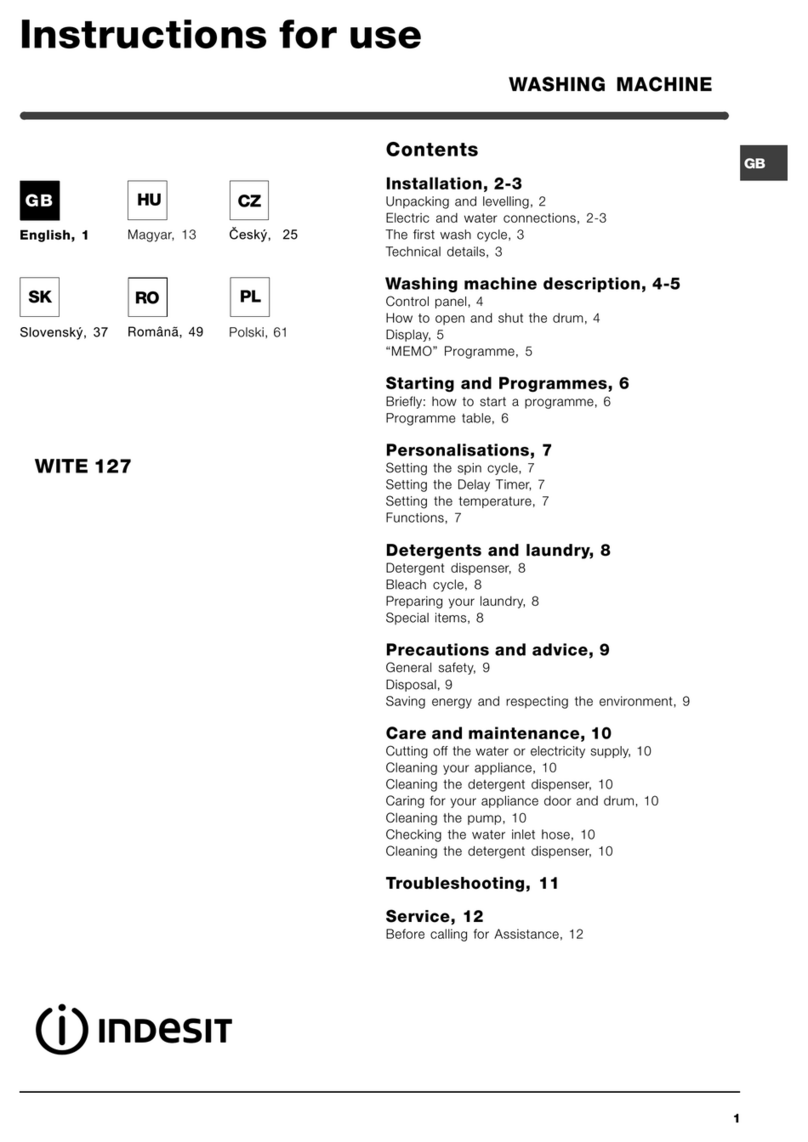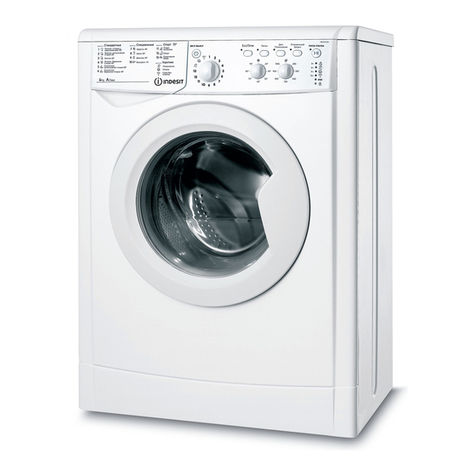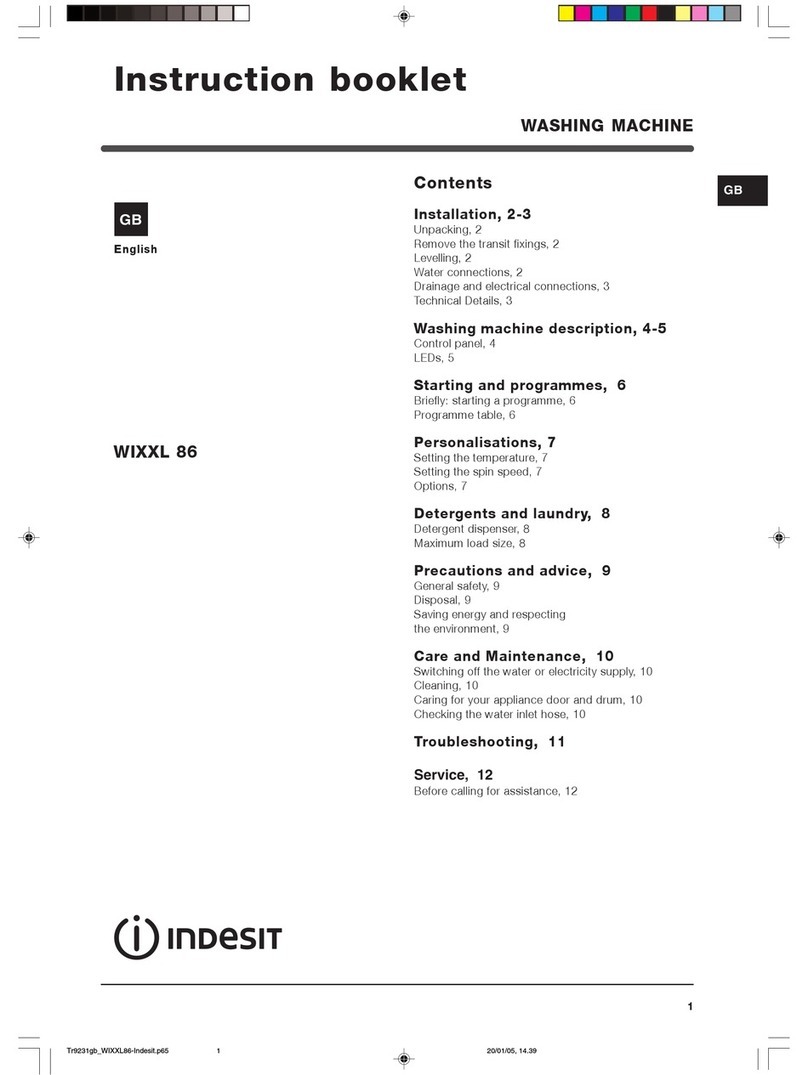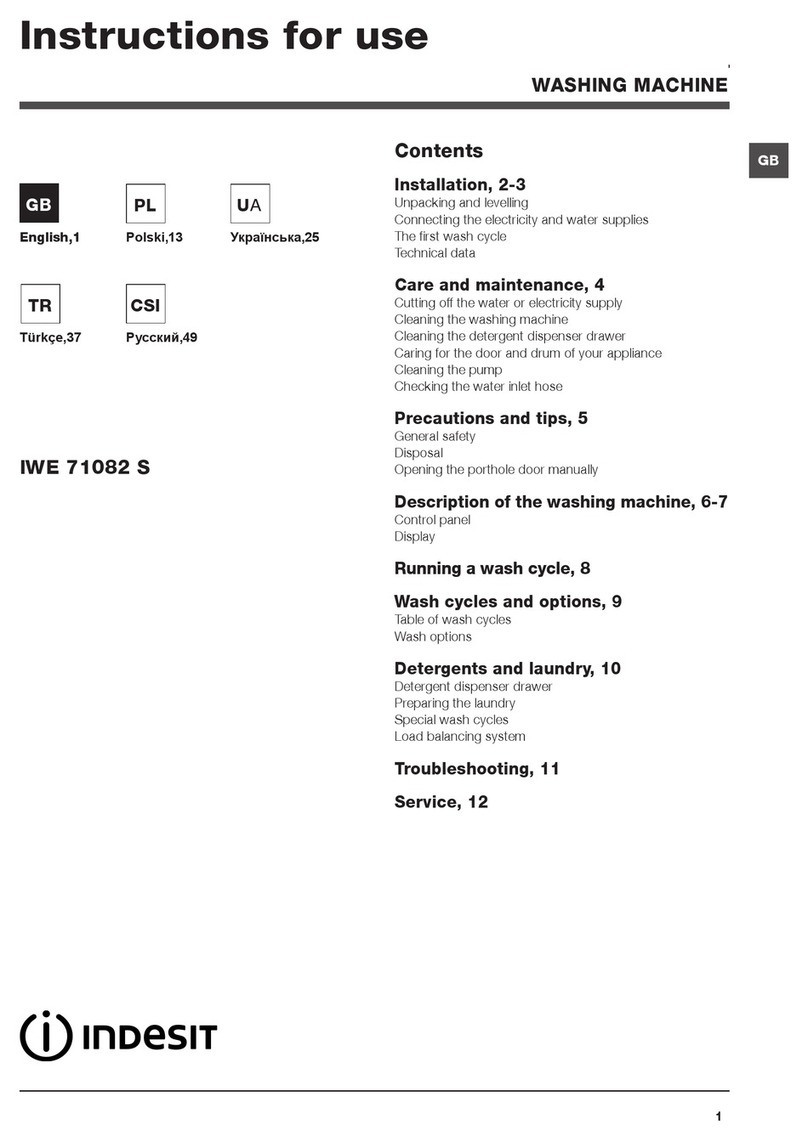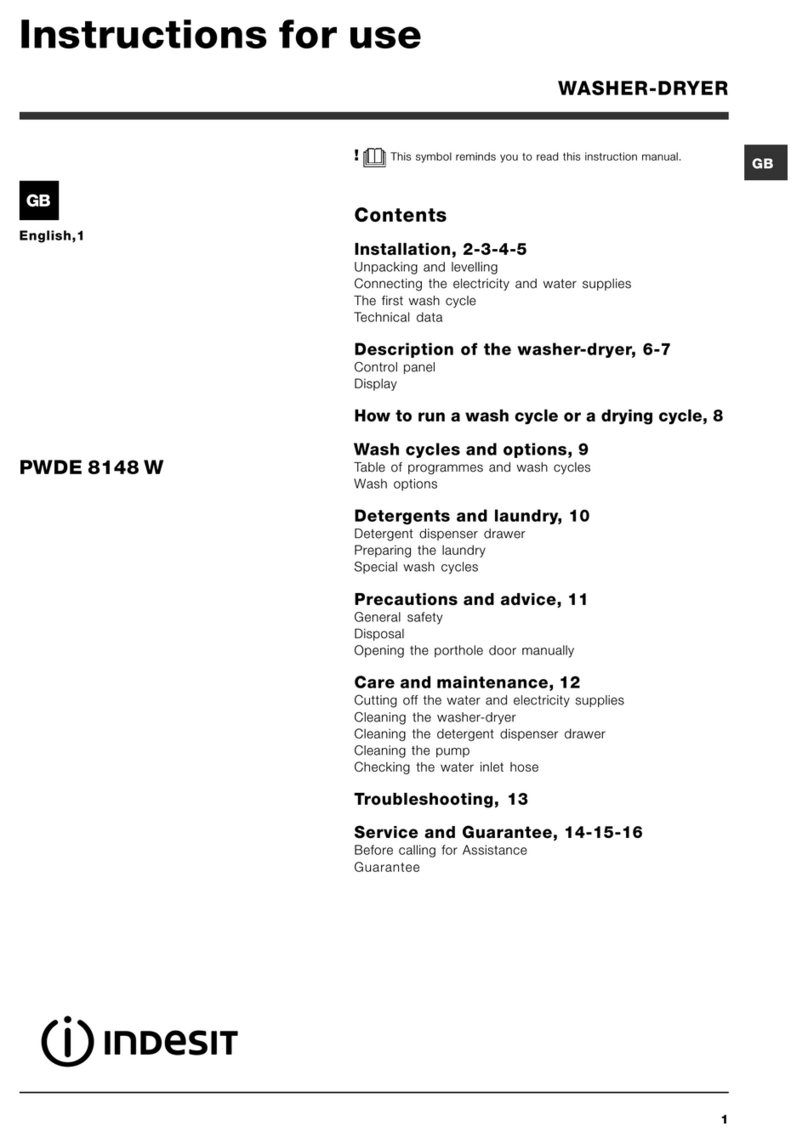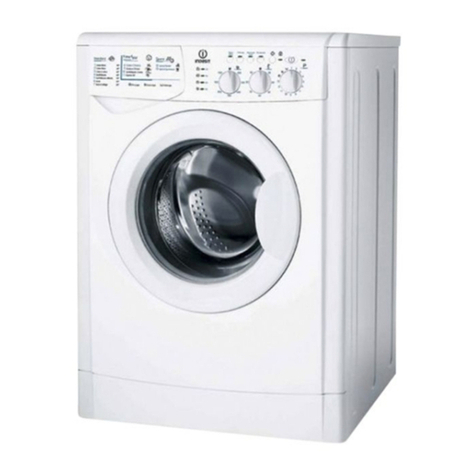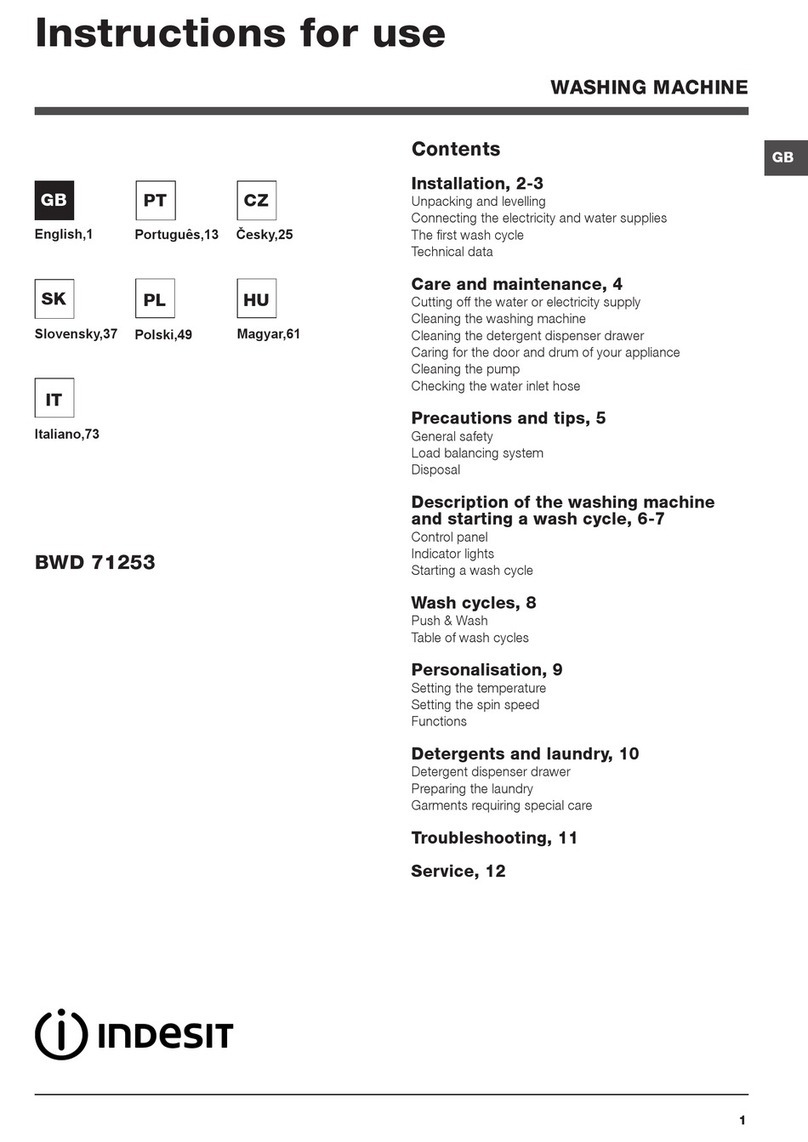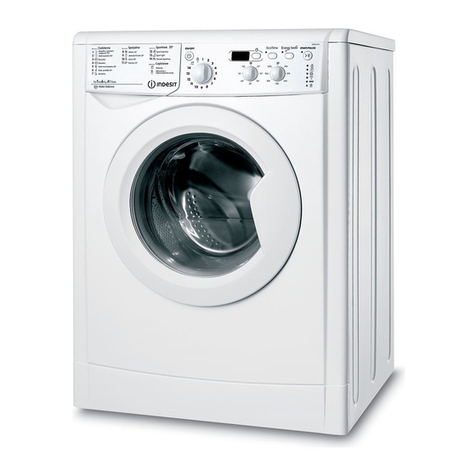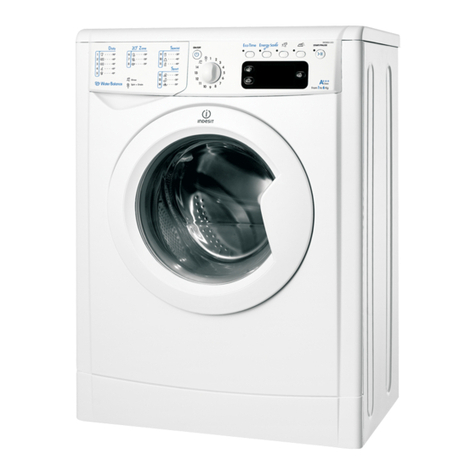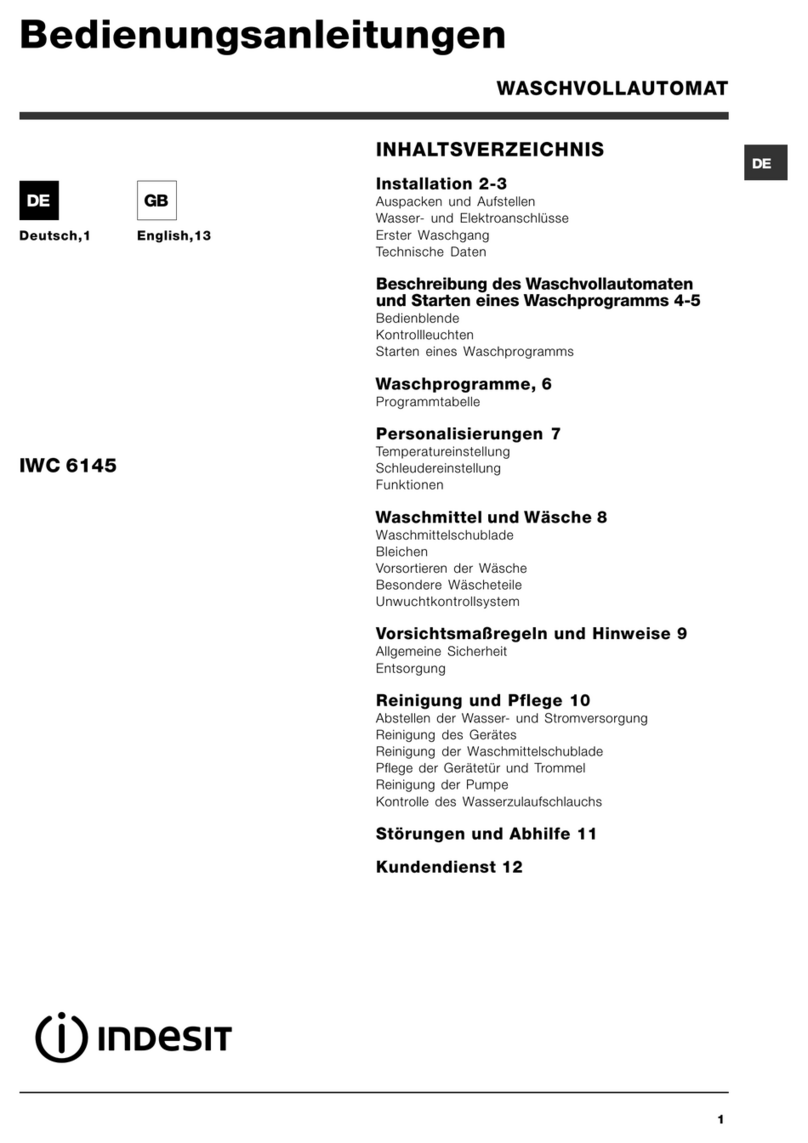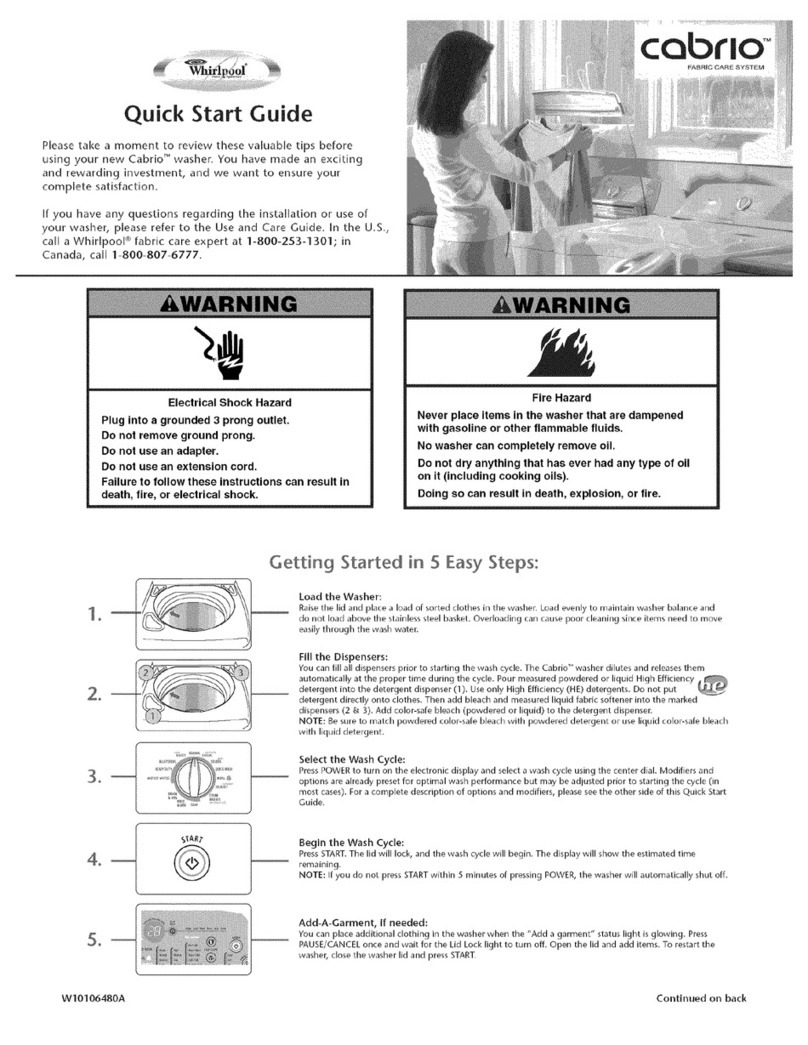8
GB
Type of fabric and
degree of soil Progr. Te m p e -
rature
Detergent Fabric
softener
Stain removal
option/bleac
Cycle
lengt
(minutes)
Max.
Spin
Speeds
(r.p .m .)
Description of was cycle
pre-
wash wash
tandard
Cotton: Extremely soiled whites
(sheets, tablecloths, etc.) 190°C 155 Max. Pre-wash, wash cycle, rinse cycles,
intermediate and final spin cycles
Cotton: Extremely soiled whites
(sheets, tablecloths, etc.) 290°C elicate/
Traditional 150 Max. Wash cycle, rinse cycles,
intermediate and final spin cycles
Cotton: Heavily soiled whites
and fast colours 260°C elicate/
Traditional 140 Max. Wash cycle, rinse cycles,
intermediate and final spin cycles
Cotton: Heavily soiled whites
and delicate colours 240°C elicate/
Traditional 125 Max. Wash cycle, rinse cycles,
intermediate and final spin cycles
Cotton: Slightly soiled whites
and delicate colours (shirts,
jumpers, etc.) 340°C elicate/
Traditional 85 Max. Wash cycle, rinse cycles,
intermediate and final spin cycles
Synt etics: Heavily soiled
fast colours (baby linen, etc.) 450°C elicate 83 800 Wash cycle, rinse cycles, anti-
crease or delicate spin cycle
Synt etics: Heavily soiled
fast colours (baby linen, etc.) 440°C elicate 70 800 Wash cycle, rinse cycles, anti-
crease or delicate spin cycle
Wool 540°C elicate 50 600 Wash cycle, rinse cycles and
delicate spin cycle
Very delicate fabrics
(curtains, silk, viscose, etc.) 630°C 45 no Wash cycle, rinse cycles, anti-
crease or draining cycle
Time 4 you
Cotton: Heavily soiled whites
and fast colours 760°C 60 Max. Wash cycle, rinse cycles,
intermediate and final spin cycles
Cotton: Slightly soiled whites
and delicate colours (shirts,
jumpers, etc.) 840°C 50 Max. Wash cycle, rinse cycles,
intermediate and final spin cycles
Synt etics: elicate colours (all
types of slightly soiled garments) 940°C 40 800 Wash cycle, rinse cycles,
delicate spin cycle
Synt etics: elicate colours (all
types of slightly soiled garments) 10 30°C 30 800 Wash cycle, rinse cycles and
delicate spin cycle
port
Sports shoes (MAX. 2 pairs) 11 30°C 50
800 Cold wash (without detergents),
wash cycle, rinse cycles, and
delicate spin cycle
Fabrics for sportswear
(Tracksuits, shorts, etc.) 12 30°C 60 600 Wash cycle, rinse cycles,
intermediate and final spin cycles
MEMO Allows for any wash cycle to be stored (see pag. 7)
PARTIAL PROGRAMME
Rinse elicate/
Traditional 800 Rinse cycles and spin cycle
Spin 800 raining and spin cycle
rain no raining
tarting and Programmes
Programme table
Notes
-For programmes 7 and 8, we advise against exceeding a wash load of 3.5 kg.
-For programme 12 we advise against exceeding a wash load of 2 kg.
-For the anti-crease function: see Easy iron, opposite page. The information contained in the table is purely indicative.
pecial programme
Dail (programme 10 for Synthetics) is designed to wash lightly soiled garments in a short amount of time: it only lasts
30 minutes and allows you to save on both time and energy. By setting this programme (10 at 30°C), you can wash
different fabrics together (except for woollen and silk items), with a maximum load of 3 kg.
We recommend the use of liquid detergent.
Briefly: starting a programme
1. Turn the washing machine on by pressing button .
2. Load your laundry into the washing machine and
shut the appliance door.
3. Set the knob to the desired programme. The
estimated duration of the selected programme is
displayed. The temperature and spin speed are
automatically set according to the programme
(to change them, see page 9).
4. Select any functions (see page 9).
5. Add the detergent and any fabric softener
(see page 10).
6. Start the programme by pressing the START/RESET
button for one second.
To cancel it, keep the START/RESET button
pressed for at least 2 seconds.
7. When the programme has ended, the word EN is
displayed. Take out your laundry and leave the
appliance door ajar to allow the drum to dry
thoroughly.
8. Turn the washing machine off by pressing button .

